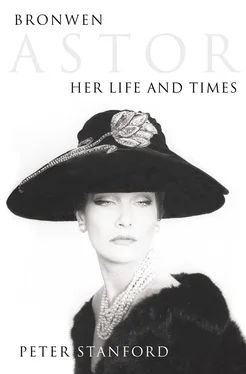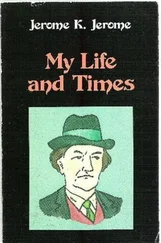Yet Ouspensky and Gurdjieff initiated a search for a complementary psychological and spiritual framework that has since dominated Bronwen’s life. In her student days and as she took her first faltering steps into the adult world of work, the two principal elements within her and hence in her story began to unravel – the spiritual and the material. At the same time as she was setting her sights on the flimsy, fun and throwaway world of model girls, with their jetset lifestyles, headline-grabbing antics and aristocratic suitors, she embarked on a lonely and often painful journey to understand her own psyche and soul.
*In a recent similar case in Egypt, reported in British medical journals, a sixteen-year-old builder went to see his doctor with severe stomach pains. An X-ray revealed a swollen sac pressing against his kidneys and containing his unborn twin, a seven-inch long foetus, weighing more than four pounds. It had a head, an arm, a tongue and teeth. Like an incubus it had been surviving inside the sixteen-year-old, feeding off him.
One of the many reasons why it is difficult to make a start as a model is that, although the photographers and fashion houses are crying out for new faces, when it comes to the point none of them want to take the risk of trying out a new girl while she is still green.
Jean Dawnay, Model Girl (1956)
The fashion world recovered more quickly than most industries from the dislocation of the war. In Paris in February 1947 Christian Dior’s ‘New Look’ thrilled critics, buyers and public alike. ‘It’s quite a revolution, dear Christian,’ remarked Carmel Snow, reporting for Harper’s Bazaar , at the unveiling of Dior’s dramatic, narrow-waisted, low-cut, very feminine and distinctly nostalgic collection, harking back, some experts said, to the hour-glass silhouette of the 1890s. ‘Your dresses have such a new look. They’re quite wonderful.’
Snow had coined a phrase to emphasise Dior’s break with the drab, austere and utilitarian style of the war years, symbolised by his abundant use of material after a period in which it had been severely rationed. Dior, Snow claimed with some truth, had done more, however, than simply create a style. ‘He has saved Paris as Paris was saved in the Battle of the Marne.’
For there had been doubts expressed about the French capital’s ability to regain its pre-war dominance of the fashion industry, notably with American buyers. Certainly during the war years Paris had lost its crown when Hollywood brought together fashion and film to make New York’s Seventh Avenue the place to be, but the transatlantic clamour that followed the launch of the New Look – Olivia de Havilland and Rita Hayworth were amongst the Hollywood stars who rushed to place orders – ensured that Paris was back at the top of the tree. Pierre Balmain, Jacques Fath and Cristobal Balenciaga all contributed to this pre-eminence; by 1950 they had been joined by Pierre Cardin, two years later by Hubert de Givenchy. But it was Dior who reigned supreme.
In so far as Paris entertained any European rivals, they were Rome and Florence, where designers like Capucci, Pucci, Simonetta, Fabiani and Galitzine were admired, if not held in quite such global high esteem as Dior and his near neighbours. In the fashion industry, London remained something of an enigma. It considered itself as good as, if not better than, Paris and certainly looked down on the Italians. Throughout the 1950s the universal penchant amongst Europe’s designers for classically English tailored evening dresses and tweed suits as part of an exaggeratedly aristocratic look contributed to London’s self-assuredness. But the irony was that the driving force behind this English look was Paris, which took the safe lines coming out of London – ‘knights’ wives clothes’, as they were sometimes unkindly labelled – and turned them into something special.
The traffic was, in reality, two-way. London had been touched by the shock waves that issued forth from Paris with the New Look. Like the rest of the fashion world, it followed Dior’s lead. Yet it did so in moderation, sticking to its own particular style and developing its own innovations – like coloured furs. Jean Dawnay, who worked with the top designers on both sides of the English Channel before she retired as a model girl in 1956, sums up the subleties of the battle with an anecdote. While working at Dior, she was sent as one of a small team to show some of the house’s latest designs at the French embassy in London. The clothes had a strongly English look. To acknowledge his design debt to his hosts, Dior decided that his designs should be made up in British tweeds and worsteds. According to Dawnay, the gesture backfired when the flowing dresses she had worn in Paris overnight became stiff and ungainly when made from home-spun cloth. They did not move with her body but stood out in counterpoint to it. Only the most formal suits and evening dresses translated well. ‘The English designers catered almost exclusively for the smart English families,’ says Dawnay. ‘If they were having a ball or a coming-out party, they would go to Hardy Amies for a dress and so on. It was very insular, had its own standards and was rather dismissive of anywhere else.’
The global commercial reality, as Bronwen Pugh embarked on her career as a model girl in 1952, was that London, for all its pride and introspective one-upmanship, remained very much a stopping-off point for American buyers on their way to the main market, Paris. It wasn’t until several years later that Mary Quant and Alexander Plunket Greene launched their Bazaar shop on Chelsea’s King’s Road and revolutionised London’s standing. As yet their particular new look was nothing more than the dream of fashion college students.
For a decade and a half after the war the London market was dominated by twelve names who joined forces in the Incorporated Society of London Fashion Designers. Worth, Norman Hartnell, Charles Creed, Neil ‘Bunny’ Roger, John Cavanagh, Digby Morton, Ronald Patterson and Hardy Amies were among the best – known stars in this galaxy, each putting on two shows a year – in January and July – where they unveiled their couture collections. Below them was a layer of younger designers, the Model House Group, who made their living by adapting last year’s couture house creations from Paris. And then there were the ready-to-wear houses, from smart names like Jaeger through to high street chains like Richards Shops. The days of the big names doing anything other than making individual items to order for a wealthy, predominantly older clientele had not yet dawned.
The timeless, upper-crust English quality of the designs of Amies or Hartnell, their appeal for a female audience looking for sensible suits for a weekend’s shooting in the country or a frock for a presentation at court, chimed well with the era. After the grey years of Labour centralisation of the economy, the election of a Conservative government in 1951 heralded both an end to rationing and a welcome return to some of the pleasures of pre-war days. London was loosening up. Taking their lead from the young Queen Elizabeth II on her accession in 1952, women who followed fashion aspired to a classical simplicity that mirrored the dress codes of the landed classes at play.
This was what the satirist and social historian Christopher Booker has described as ‘the strange Conservative interlude of the fifties’:
By the summer of 1953, the glittering coronation of a new young queen, marked in a suitably imperial gesture by the conquest of Everest, was a symbol that during the years of hardship the old traditions had been merely sleeping. People were once again dressing for dinner and for Ascot … Debutantes once again danced away June nights on the river, to the strains of Tommy Kinsman and the splash of champagne bottles thrown by their braying escorts. Unmistakably British society seemed to be returning from a long dark night to sunnier and more normal times.
Читать дальше












